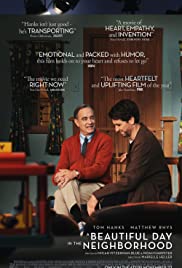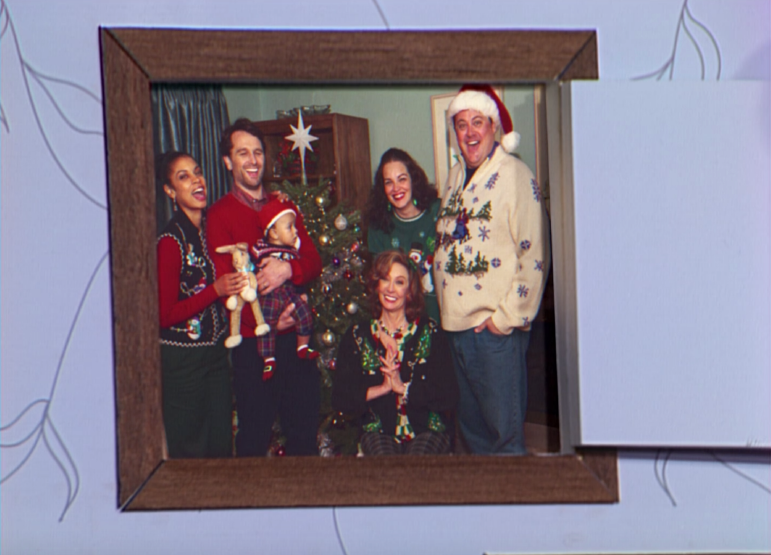A BEAUTIFUL DAY IN THE NEIGHBORHOOD
SUBJECTS — Health, ELA, United States (1949 to 1991; 1991 to Present; and the Press);
SOCIAL-EMOTIONAL LEARNING — Father/Son; Male Role Model; Parenting;
MORAL-ETHICAL EMPHASIS — Caring;
AGE; 14+; Rating: PG (for some strong thematic material, a brief fight and some mild language), 2019, 1 hr. 49 minutes.
MENU
MOVIE WORKSHEETS & STUDENT HANDOUTS
TWM offers the following movie worksheets to keep students’ minds on the film and to focus their attention on the lessons to be learned from the movie.
Film Study Worksheet for a Work of Historical Fiction; and
Worksheet for Cinematic and Theatrical Elements and Their Effects.
Teachers can modify the movie worksheets to fit the needs of each class. See also TWM’s Historical Fiction in Film Cross-Curricular Homework Project.
DESCRIPTION
For some viewers, this is one of the greatest films of a generation. For others, it’s just a really good movie. For everyone, it’s full of wisdom and love.
The movie shows a man (the character named Lloyd Vogel) in the process of getting in touch with his feelings and forgiving his father for reprehensible conduct years before. The film also shows another man (the late Fred Rogers) seeing Vogel’s need to heal the hidden wound of his hatred for his father, and then facilitating Vogel’s transition to forgiveness and reconciliation. In the process we see something of Mr. Rogers’ work as the creator and star of Mr. Rogers’ Neighborhood, a television program designed to be beneficial to young children, While the portrayal of Mr. Rogers is accurate, the heart of the film is the story of Llyod Vogel’s emotional growth and Fred Rogers’ actions assisting in that process.
It’s a Beautiful Day in the Neighborhood is based on the real-life friendship between Fred Rogers and a magazine writer named Tom Junod. They met when Junod, who had a reputation for uncovering the flaws and hypocrisies in the subjects of his interviews, was assigned by Esquire Magazine to write a profile of Mr. Rogers. However, Junod found only caring and sincerity in Fred Rogers. Instead of Junod finding a flaw in Rogers, it was Rogers who recognized, not a deficiency in Junod, but an unsettled issue in Junod’s life, and who then went about trying to help Junod resolve that issue. Thus began a friendship which lasted for the rest of Rogers’ life. While the conflict shown in the film between the Lloyd Vogel character and his father is fictional, Junod wrote, after he had watched the movie in a special showing before its release . . .
I had counted on the plot’s many departures from my life to insulate me from the emotional effect of seeing some version of myself up there, but in the screening room I had no such protection, because the director, Marielle Heller, had been so faithful to the essence of the story. A long time ago, a man had seen something in me I hadn’t seen in myself, . . . .” Tom Junod, Mister Rogers’s Enduring Wisdom, The Atlantic magazine, December 27, 2019
In addition, to the extraordinary work of the director, the screenwriting is superb, and the acting is excellent.
For a lesson based on a film that goes into more depth about Fred Rogers’ work in children’s television, see TWM’s Learning Guide to the documentary Won’t You be My Neighbor.
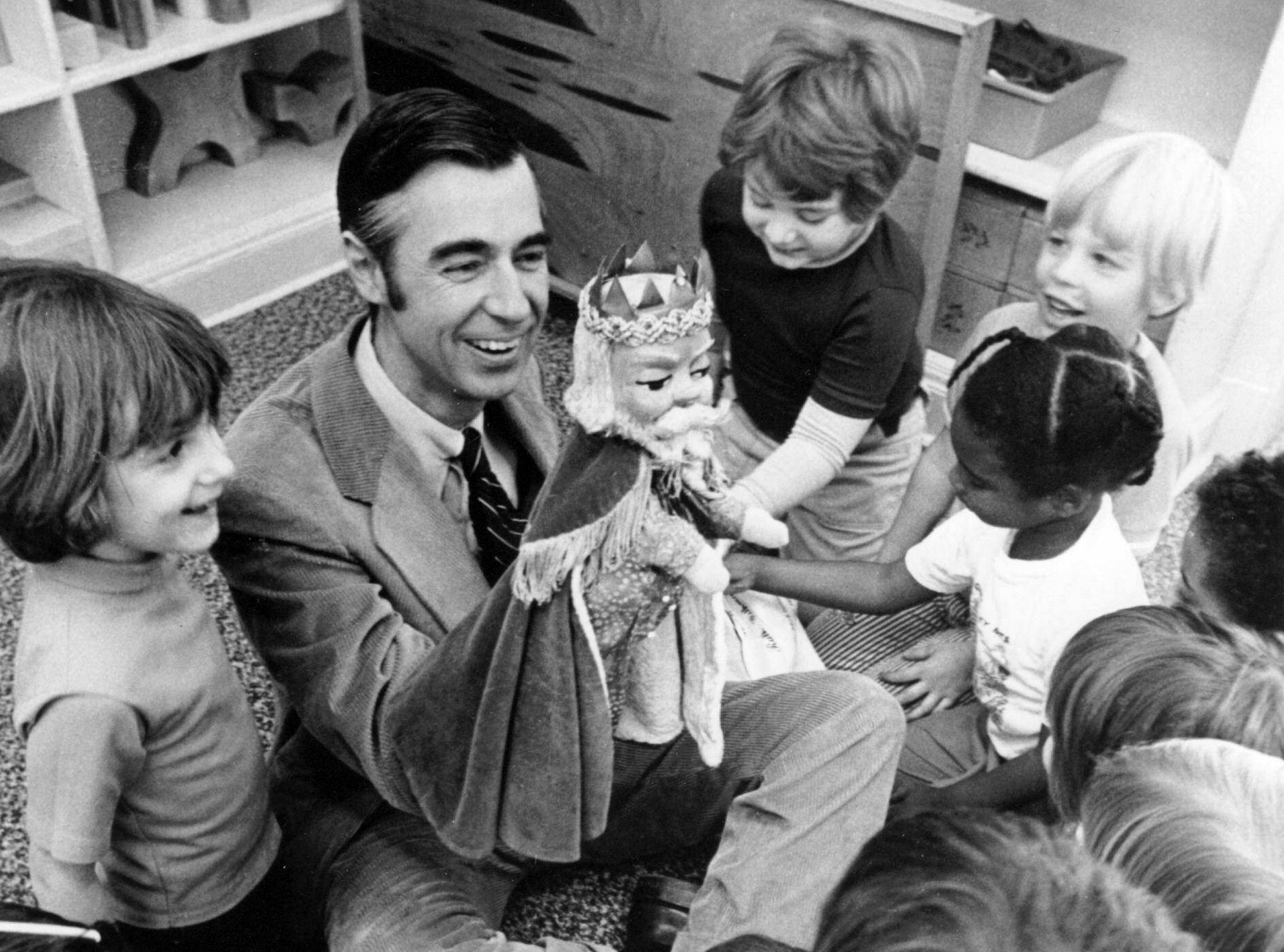
SELECTED AWARDS & CAST
Director: Marielle Heller
Writers: Micah Fitzerman-Blue, Noah Harpster
Stars: Tom Hanks, Matthew Rhys, Chris Cooper
BENEFITS OF THE MOVIE
This film has the capacity to help teenagers and adults, especially boys and men, learn the benefits of being in touch with their feelings and of forgiving. In the character of Fred Rogers, the film shows humanity in one of its highest forms: a lifelong commitment to doing good in the world and reaching out to help a person in need. In Fred Rogers boys and men are shown a positive counter to the toxicity of macho masculinity.
TWM sees uses for this film in education in three subject areas. First, in health classes, it can serve as the basis for a discussion and assignments relating to: (1) the benefits of forgiveness and reconciliation in family relationships and in life generally and (2) an example of a male role model with mature and evolved masculinity. In ELA classes, in addition to being a story with themes that are important life lessons, it demonstrates a number of the elements of fiction. Finally, in journalism classes, it can serve as the basis for discussions about the craft of that profession.
POSSIBLE PROBLEMS
None.
PARENTING POINTS
Watch the movie with your teenagers (ages 14 and above). Point out that Mr. Rogers went out of his way to help Lloyd Vogel, even though they had not known each other before the interview. Tell them that the real Mr. Rogers did this as well. Parents of teenage boys can discuss with them the concept that Fred Rogers was a male role model. See “Fred Rogers – A Male Role Model“, If you have children ages two to five, show them recorded episodes of Mr. Rogers’ Neighborhood. It is among the best children’s programming ever produced.
HISTORICAL ACCURACY

Fred Rogers’ main mission in life was to create television programs that gave children ages two to five positive ways to deal with their feelings. He also sought to improve their self-esteem. This is well known. Less well known are Mr. Rogers’ efforts to help adults with whom he came into contact. This film is inspired by one of those efforts.
This story involves the character of Lloyd Vogel interviewing Mr. Rogers to learn what type of person he is and how he goes about creating Mr. Rogers’ Neighborhood.
In addition, the television program, Mr. Rogers Neighborhood, is a motif that recurs throughout the story. There are, therefore, many scenes focusing on Mr. Rogers himself and the production of the television program. The depiction of Fred Rogers and of specific incidents in his life are reasonably accurate, including: the subway ride in New York City when young passengers spontaneously burst into one of the songs featured on Mr. Rogers’ Neighborhood; Mr. Rogers interviewing the interviewer; Mr. Rogers’ vegetarianism and his statement that he could never eat anything that had a mother; Mr. Rogers’ love of swimming; Mr. Rogers’ love of music; Mr. Rogers’ puppetry and his identification with the puppet Daniel Striped Tiger; the adoring crowds of young children; Mr. Rogers’ ability to listen to a child; Mr. Rogers’ practice of praying each day and naming people in his prayers; and the interview with the boy who held a sword.
The scene in the diner in which Mr. Rogers asks the journalist to think about the people who “loved us into being” recalls a frequent topic of Mr. Rogers in discussions and speeches. Its power is described by Junod:
He had already won his third Daytime Emmy, and now he went onstage to accept Emmy’s Lifetime Achievement Award, and there, in front of all the soap-opera stars and talk-show sinceratrons, in front of all the jutting man-tanned jaws and jutting saltwater bosoms, he made his small bow and said into the microphone, “All of us have special ones who have loved us into being. Would you just take, along with me, ten seconds to think of the people who have helped you become who you are….Ten seconds of silence.” And then he lifted his wrist, and looked at the audience, and looked at his watch, and said softly, “I’ll watch the time,” and there was, at first, a small whoop from the crowd, a giddy, strangled hiccup of laughter, as people realized that he wasn’t kidding, that Mister Rogers was not some convenient eunuch but rather a man, an authority figure who actually expected them to do what he asked…and so they did. One second, two seconds, three seconds…and now the jaws clenched, and the bosoms heaved, and the mascara ran, and the tears fell upon the beglittered gathering like rain leaking down a crystal chandelier, and Mister Rogers finally looked up from his watch and said, “May God be with you” to all his vanquished children. Tom Junod, Can You Say…Hero? – Mr. Rogers Profile Interview,” Esquire Magazine, November, 1998.
For a discussion of the amazing quality of Mr. Rogers’ Neighborhood and an evaluation of some of the criticisms of Mr. Rogers, see, Learning Guide to Won’t You Be My Neighbor.
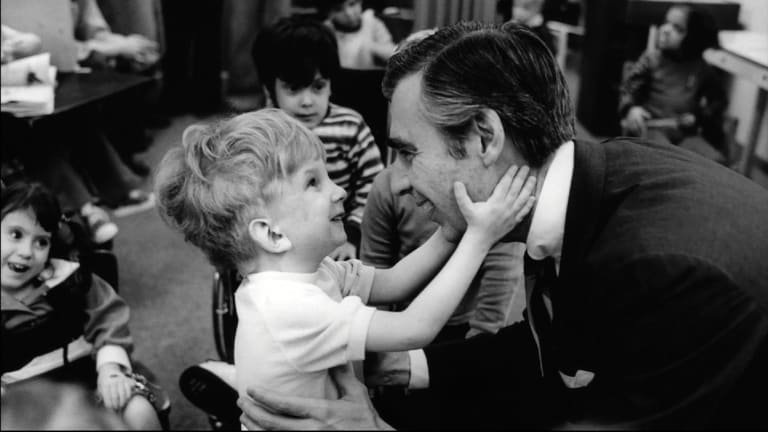
Fred Rogers – a Male Role Model
Because of his soft and deliberate delivery, his focus on children, his emphasis on empathy and love, and even the way that he moved, many people have wondered about Fred Rogers’ “masculinity.” Certainly Fred Rogers did not conform to the pernicious and out-dated stereotypes of a “macho man.” Tom Junod, the magazine writer whose interactions with Fred Rogers suggested the character of Lloyd Vogel in the film, said that “Anybody who looked at Fred, looked at somebody they couldn’t compare to anyone else. . . . That was one of the things that I responded to. I definitely saw another way of being a man.” Interview in 2018 Documentary Won’t You Be My Neighbor. Morgan Neville, who wrote and directed that documentary and in the process studied the life of Fred Rogers, had this to say, “If Mister Rogers is considered a ‘wimp’ in popular culture, the real Fred Rogers was the opposite – a man of iron will on a mission, and with a real vision. He was funny, he was devout, and he was deep.” PBS Independent Lens, February 1, 2019.
TWM believes that Fred Rogers is a role model for boys and men. He was committed to doing good in the world and acted upon that commitment with intelligence and perseverance. He lived a life of empathy, kindness, and decency. He nurtured family and friends. He was a gentle soul who was a vegetarian because he could not bring himself to eat anything that had a mother. However, he was fierce in the fulfillment of his mission, creating almost a thousand beneficial television programs based upon principals of childhood development. Now, that’s a male role model.
USING THE MOVIE IN THE CLASSROOM
INTO:
To put the class into the right mood to watch this film, have students write a one page essay with the following topic: “These are the people who have loved me into being helping me to become the person that I am today or hope to be in the future. For each one, this is how they have done it.” Assure students that their essays will be kept confidential.
Then introduce the class to Fred Rogers. First, test for prior knowledge by asking students what they know about Mr. Rogers. Then, to the extent not discussed by the students, provide the following information through direct instruction.
- Mr. Rogers created and starred in a popular television program for children ages two to five called Mr. Rogers’ Neighborhood. The program ran for 31 years.
- Mr. Rogers was trained in child psychology and often consulted experts in the field to make sure that his programs were beneficial to children.
- The character of Mr. Rogers in the film, correctly states the goal of the real Fred Rogers in every episode of his program: “I try to look through the camera, into the eyes of each child watching, and speak to them, as if individually, trying to be fully present to their feelings and needs.”
- There was a section of Mr. Rogers’ Neighborhood called “the Neighborhood of Make-Believe” in which puppets interacted with people. The characters in the Neighborhood of Make Believe include Daniel Striped Tiger and King Friday XIII.
- Many of the incidents in the movie recount events that actually occurred.
THROUGH:
Show the film to the class.
ELA CLASSES: ELEMENTS OF FICTION IN THE MOVIE
1. The film is set as an episode of Mr. Rogers’ Neighborhood. The beginning of the movie is the beginning of a program. The action of the film occurs within the episode. The end of the movie is the end of the episode, with Mr. Rogers using Picture/Picture to show a photograph of Lloyd and his family.
2. Periodically through the movie we are shown images of the miniature residential neighborhood from the set of the television program. At other times we are shown a miniature New York City or a miniature Pittsburg with a make-believe plane or a car. There are other scenes from the Neighborhood of Make-Believe. These show that we are still within the episode and that what is happening in Mr. Rogers’ Neighborhood is important. References to the TV show are a recurring motif in the story.
3. The incident with the car seat at the beginning of the film sums up Lloyd’s character before his transformation, i.e. when he has difficulty completing a task, he gets angry and lashes out, and then someone else has to do it for him or show him how to do it.
4. The story has two intersecting plot lines, the story of the relationship between Mr. Rogers and Lloyd, and the story of Lloyd and his father
5. In this story, there is one character who develops, while all the others are static, although the character of Lloyd’s father, Jerry, has undergone some strong development in the past.
DISCUSSION QUESTIONS
1. Some people say that Fred Rogers was a male role model. Do you agree or disagree? State your reasons. [Another way to ask this question is, “Because of his soft and deliberate delivery, his focus on children, his emphasis on empathy and love, and even the way that he moved, some people have wondered about Fred Rogers’ masculinity. However, other people believe that Mr. Rogers embodied a highly evolved form of masculinity. What do you think about this question? State your reasons.”
Suggested response: See section above on “Fred Rogers – A Male Role Model.”
2. [Show the class the photograph of the Vogel family that was in one of the windows of Picture-Picture at the end of the film. Ask the following question:] There are several important points expressed by the filmmakers in this photo. What are they?
Suggested Response: TWM suggests the following. There may be more.
a) Gavin and Andrea are holding a stuffed rabbit. This shows the continuity between the childhoods of Gavin and his father, who treasured Old Rabbit.
b) Everyone in the picture, especially Lloyd, looks happier and more relaxed in this photograph than they looked at any other time in the film.
c) The family includes Lorraine, showing that Lloyd has learned the inclusiveness of love, i.e., that someone who loves a person in your family can become part of your family even if the family member has died.
3. [Ask this question after asking question #2 and while the family picture is still shown to the class.] Mr. Rogers tells us at the beginning of the movie that forgiveness is “a decision we make to release a person from the feelings of anger we have at them. It’s strange, but sometimes it’s hardest of all to forgive someone we love.” In this story, who benefits when Lloyd forgives Jerry?
Suggested answer: Every person in the Vogel family and especially Lloyd benefits when Lloyd forgives Jerry. Lloyd will finally be able to let go of his anger, heal the wound, and go on with his life. Teachers should tell the class that someone who is injured, who holds on to their anger against the person who caused the injury, and who does not forgive, especially when the perpetrator of the injury is a close family member, cannot completely heal from the injury. Usually, the person who forgives benefits more from the forgiveness than the person who is forgiven because the injured person can then move on with their life. In addition, the act of forgiving often benefits everyone around the person who forgives. Forgiving is often very hard, especially when the wrong is extreme, like murder or childhood sexual abuse. In very rare situations it may be impossible to forgive. In many situations, forgiveness may take time. It is easier if the perpetrator apologizes and repents. However, sometimes forgiveness is given even when the perpetrator refuses to repent. An example of this is the forgiveness by parishioners of the Emanuel AME Church in Charleston of the white supremacist who killed nine of their friends and loved ones at a bible study class in 2015. The message is, forgive whenever possible. It’s good for you and for everyone around you..
4. Describe the character of Lloyd Vogel at the beginning of the film and how he changes through the course of the movie.
Suggested Response: There is no one correct response. An example of a strong response is that, at the beginning of the film, he is broken; an important part of his life, his relationship with his father, is an open wound, that he does his best to ignore. However, it colors the rest of his life. For example, he excels at interviewing famous people and disclosing their faults. This can be seen as an exercise in debunking authority figures, i.e., his father. This doesn’t work, of course, when he meets Mr. Rogers, who is a virtuous man. By the end of the film, Lloyd has forgiven his father, has a more integrated personality, and is a happier man.
5. After the fight at the wedding, Andrea says to Lloyd, “So you’re going to take no responsibility for what happened?” Loyd responds, “Of course I am. I offered to pay for Lorraine’s dry cleaning.” What does this exchange show?
Suggested Response: Andrea is obviously referring to the fact that Lloyd has unresolved feelings about his father and that he had attacked his father. Lloyd is in denial about his need to resolve his feelings about his father and responds as if his responsibility for the incident extended only to paying for dry cleaning.
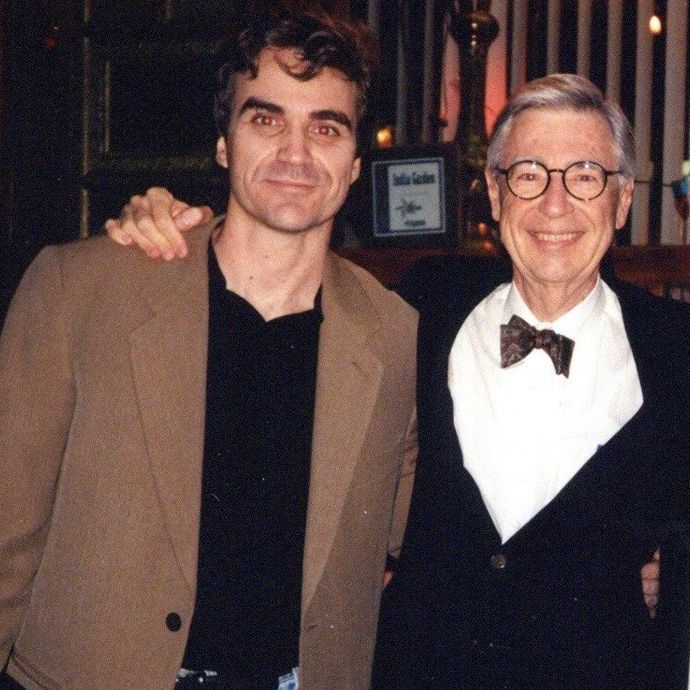
Tom Junod and Mr. Rogers
SOCIAL-EMOTIONAL LEARNING
For Father and Son, see Discussion Questions 4 and 5.
For Male Role Model see Discussion Questions 1 and 6.
MORAL-ETHICAL EMPHASIS (CHARACTER COUNTS)
See Discussion Questions 2 and 3.
9. Did Jerry deserve to be forgiven? Does it matter?
Suggested Response: Jerry deserved to be forgiven because he had apologized and tried to make amends by re-establishing contact with his children.
The second question is difficult to answer. It depends upon many factors, including: the seriousness of the offense; whether the offender has sought to mitigate the damage; whether the offender has acknowledged his or her wrong and apologized, whether the offender has performed good works to redeem hm or herself; and how much time has passed since the offense. The forgiver has to be in the right place in his or her life and ready to forgive. This is especially true in family situations. For example, Lloyd Vogel had just had a son and he was ready to deal with his relationship with his own father. However, some people can forgive out of religious conviction, as was done by the members of the Emmanuel African Methodist Church in Charleston, South Carolina, who forgave the white supremacist (we will not use his name to avoid giving him more notoriety) who killed nine members of a bible class in 2015.
ASSIGNMENTS, PROJECTS & ACTIVITIES
All of the discussion questions are good essay prompts.
1. List out at least two of the themes in this film and explain how those themes are shown by the actions of the characters in the movie.
Suggested response:
Themes of the movie include: forgiving, the benefits of forgiving, what is a male role model, and what it means to be a hero.
2. The Lloyd Vogel character talks about his craft of being a journalist with the following: “Because doing anything else doesn’t seem quite like living at all. We get a front row seat to history. We get to expose the truth that others cannot see. And sometimes, just sometimes, we get to change a broken world with our words.” Find an example of an article or a series of articles in a newspaper or magazine through which a journalist has helped to change a broken world with words.
Suggested responses:
the Washington Post articles on Watergate; the publication of the Pentagon Papers by the New York Times; the exposure of the childhood sexual abuse scandal by the Boston Globe; and the recent revelations in the New Yorker Magazine of sexual abuse of women by powerful men that inspired the “#metoo” movement.
BEYOND:
Fred Rogers met Koko the Guerilla. See Koko Meets Mr. Rogers, Her Favorite Celebrity
CCSS ANCHOR STANDARDS
Multimedia:
Anchor Standard #7 for Reading (for both ELA classes and for History/Social Studies, Science, and Technical Classes). (The three Anchor Standards read: “Integrate and evaluate content presented in diverse media, including visually and quantitatively as well as in words.”) CCSS pp. 35 & 60. See also Anchor Standard # 2 for ELA Speaking and Listening, CCSS pg. 48.
Reading:
Anchor Standards #s 1, 2, 7 and 8 for Reading and related standards (for both ELA classes and for History/Social Studies, Science, and Technical Classes). CCSS pp. 35 & 60.
Writing:
Anchor Standards #s 1 – 5 and 7- 10 for Writing and related standards (for both ELA classes and for History/Social Studies, Science, and Technical Classes). CCSS pp. 41 & 63.
Speaking and Listening:
Anchor Standards #s 1 – 3 (for ELA classes). CCSS pg. 48.
Not all assignments reach all Anchor Standards. Teachers are encouraged to review the specific standards to make sure that over the term all standards are met.
BRIDGES TO READING
For advanced high school level readers, the two articles about Mr. Rogers are insightful and beautifully written. They are Tom Junod, “Can You Say…Hero? – Mr. Rogers Profile Interview,” Esquire Magazine, November, 1998 and Tom Junod, Mister Rogers’s Enduring Wisdom, The Atlantic magazine, December 27, 2019
LINKS TO THE INTERNET
See the articles cited in this Learning Guide and in TWM’s Learning Guide to Won’t You Be My Neighbor.
- Mister Rogers and the Trophy Culture Myth, Kim Wimmer, Positive Psychology, September 30, 2018 (This is an excellent article on the legacy of Fred Rogers);
- PETA Reminds All Neighbors That It’s a Beautiful Day to Go Vegan, Zachary Toliver, PETA Website;
- My Friend Mister Rogers, Tom Junod, The Atlantic Magazine;
- Review: Tom Hanks becomes Mister Rogers in the stealthily moving ‘A Beautiful Day in the Neighborhood’, Justin Chang, Los Angeles Times;
- ‘A Beautiful Day in the Neighborhood’ Review: A Movie as Open-Hearted as Mister Rogers, Peter Travers, Rolling Stone Magazine; and
- Column: ‘A Beautiful Day’ is a great movie. It just misses the point of Mister Rogers, Mary McNamara, 11/30/19.
- Mr. Rogers . . . Cool Dude on ABC Television by John Donvan
- Terry Gross interview: February 28, 2003
- Interview with Charlie Rose, Feb 27, 2016
- Mr. Rogers Talks With Parents About Discipline
BIBLIOGRAPHY
The articles cited in this Learning Guide and The Good Neighbor: The Life and Times of Fred Rogers by Maxwell King, 2018, The Abrams Press, New York.
This Learning Guide written by James A. Frieden. It was published on April 1, 2020 and was last revised on April 14, 2020.

For an excellent documentary about the life of Fred Rogers, see Won’t You be My Neighbor.
LEARNING GUIDE MENU:
Benefits of the Movie
Possible Problems
Parenting Points
Selected Awards & Cast
Historical Accuracy
Using the Movie in the Classroom
INTO
THROUGH
Discussion Questions
Social-Emotional Learning
Moral-Ethical Emphasis
Assignments and Projects
BEYOND
CCSS Anchor Standards
Bridges to Reading
Links to the Internet
Bibliography
MOVIE WORKSHEETS:
TWM offers the following movie worksheets to keep students’ minds on the film and to focus their attention on the lessons to be learned from the movie.
Film Study Worksheet for a Work of Historical Fiction; and
Worksheet for Cinematic and Theatrical Elements and Their Effects.
Teachers can modify the movie worksheets to fit the needs of each class. See also TWM’s Historical Fiction in Film Cross-Curricular Homework Project.
Search Lesson Plans for Movies
Get our FREE Newsletter!
* we respect your privacy. no spam here!


